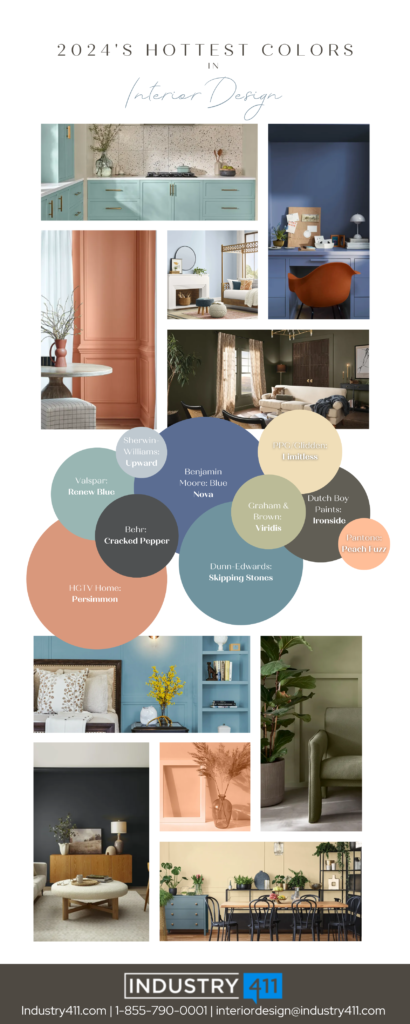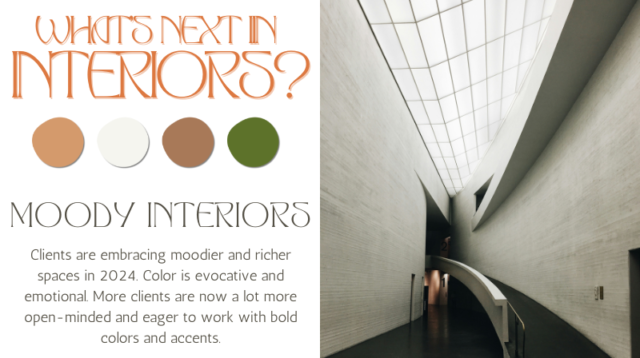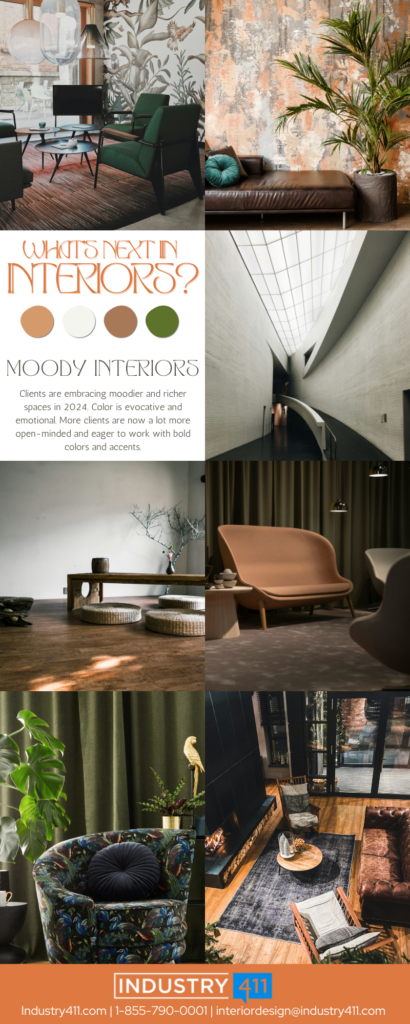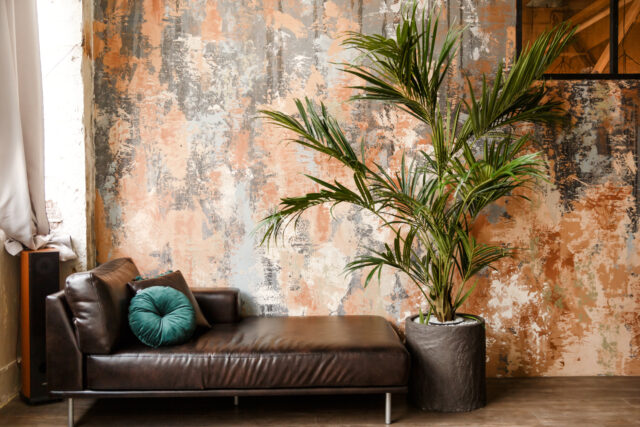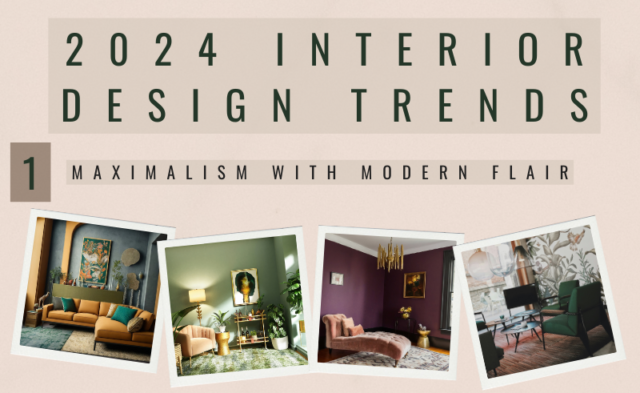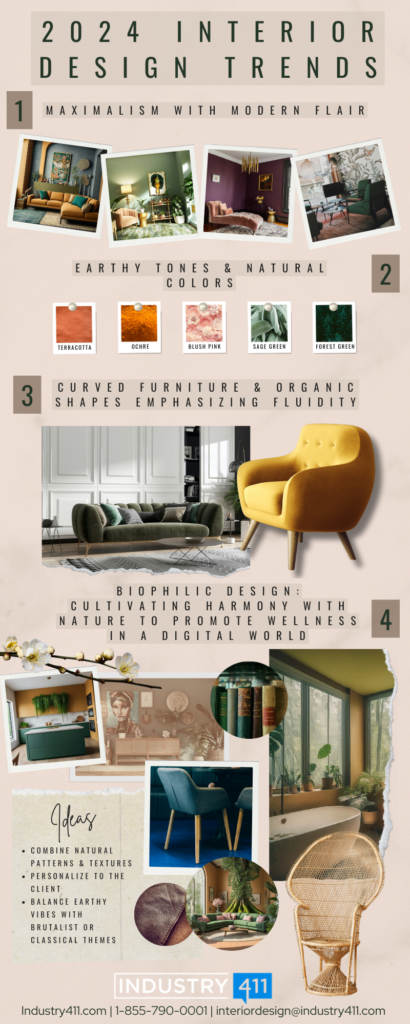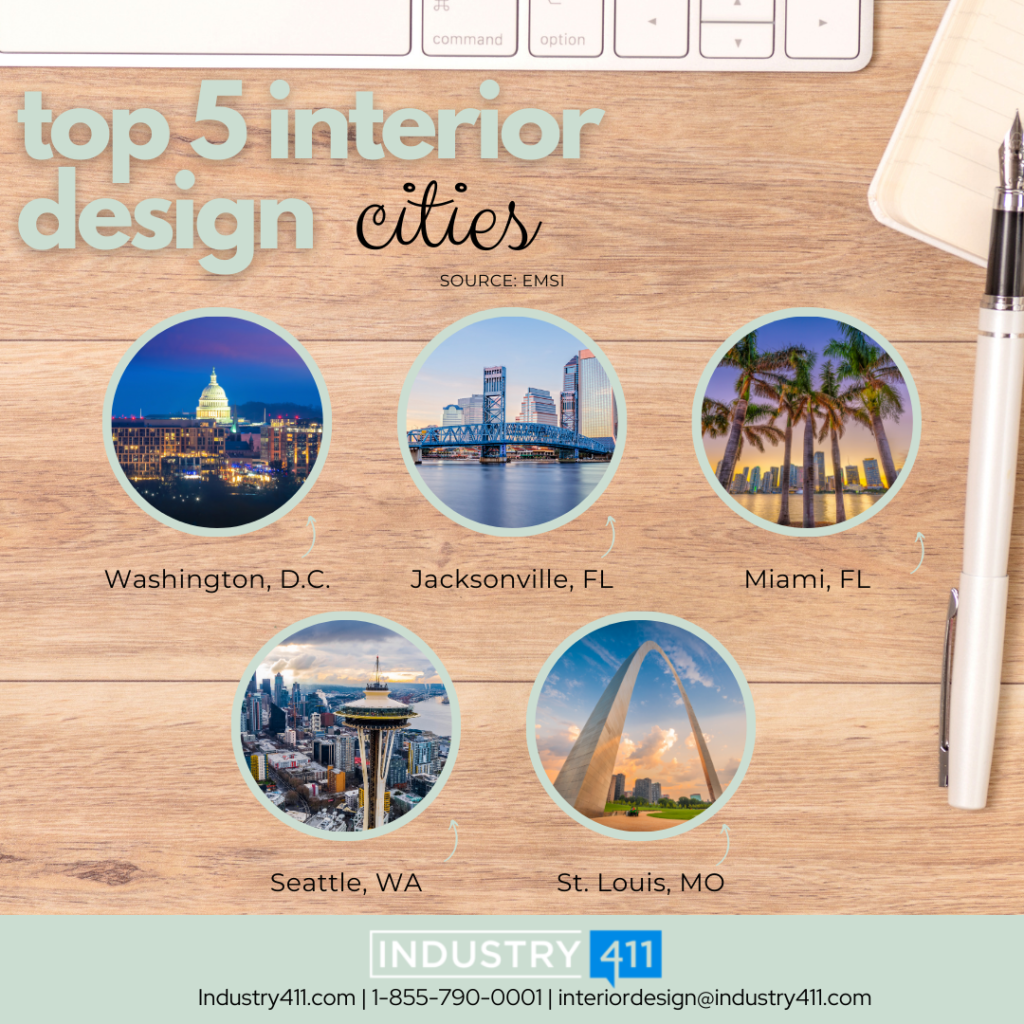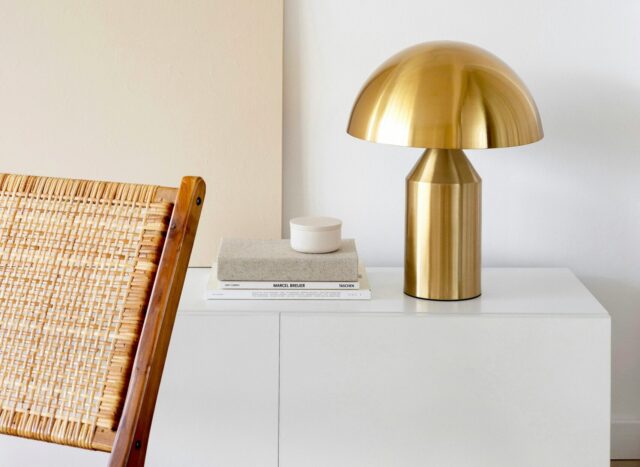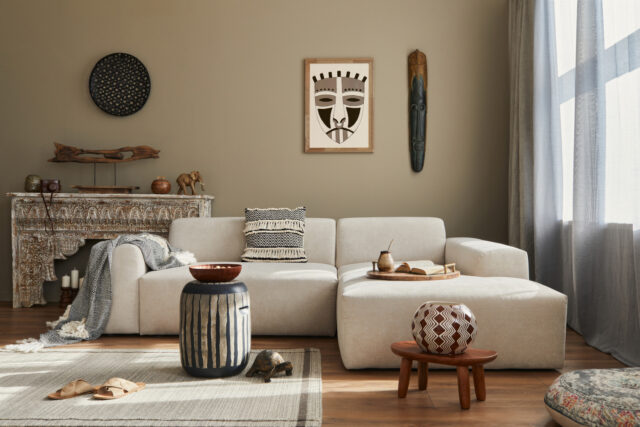Melissa Diehl
Insta-worthy Interiors: Mastering Social Media for Interior Design Success
Want to transform your social media presence and turn followers into paying clients? Savvy interior designers are leveraging the power of social media to stand out from the crowd. Let’s explore some winning strategies to take your social media game to the next level.
1. Tell a Story with Every Post
Go beyond just showcasing finished projects. Ignite curiosity by sharing the inspiration behind your designs. Was it a client’s vision, a cherished memory, or a travel adventure? People connect with stories. Share your design journey, offering a glimpse into your creative process. This builds a bond and highlights your design philosophy.
Partner with local businesses for giveaways, design challenges, or promotions. This expands your reach, introduces you to new clients, and fosters a sense of community.
Showcase the power of transformation with client testimonials. Feature “before and after” visuals and positive feedback to show the impact of your work. This builds trust and social proof to proudly display testimonials, establishing credibility with potential customers.
2. Immerse Your Audience in the Experience
Ditch the static images! Utilize video formats like before-and-after reels, virtual tours, and time-lapse transformations. Capture the finer details and showcase the interplay of textures and colors. Use dramatic “before and after” visuals to grab attention and demonstrate your design skills.
Fuel product innovation like showcasing a space-saving solution with dual pocket doors. This approach highlights functionality and caters to diverse client needs.
Design mood boards and “shop the look” posts. Merge captivating visuals with product links, empowering viewers to recreate your designs or source key pieces.
Host live Q&A sessions to build connections and share your design expertise in real-time. Use Q&A stories to provide valuable insights and address audience concerns, fostering trust and attracting clients who resonate with your design philosophy.
3. Be Interactive and Engaging
Spark conversations by using polls and questions to understand design preferences and identify common challenges. This valuable feedback helps you tailor your content strategy and build a community around your expertise.
Fuel participation with design contests or challenges. Motivate users to create content and explore different design elements. This attracts potential clients, showcases your brand identity, and fosters excitement within your community.
Respond promptly to comments and messages! Show appreciation for questions, share valuable insights, and address feedback professionally. Responsive communication builds trust and strengthens relationships with your audience.
4. Think Beyond Traditional Platforms
Explore emerging platforms to participate in live design discussions. Engage with industry experts, potential clients, and fellow designers. Share your knowledge, establish yourself as a thought leader, and build connections beyond conventional content formats.
Partner with design influencers to broaden your reach and connect with new audiences. Collaborate on product reviews, sponsored posts, or joint live streams. Leverage their established audience, gain industry insights, and create content that boosts your brand awareness and design authority.
5. Embrace Your Unique Style and Personality
Experiment with video tours, polls, user-generated content, and trending challenges. Analyze how your audience engages and ensure your formats reflect your brand identity. This fosters interaction, strengthens your brand image, and establishes you as a design authority. Remember to evaluate metrics and pivot as you explore what resonates with your audience.
Infuse your brand with personality. Share your design philosophies, passions, and behind-the-scenes stories to connect with your audience on an emotional level. This humanizes your brand and helps viewers understand your design perspective.
Be authentic! Embrace your unique voice and perspective. Let your personality shine through your content and interactions. Authenticity builds trust and connection, highlighting what makes you stand out in the design landscape.
Social media is a powerful tool for interior designers to showcase their expertise, connect with potential clients, and build a flourishing design business. By following these winning strategies and embracing your unique voice, you’ll transform your social media presence and turn followers into lifelong fans.
June’s Must-Attend Interior Design Events
As the interior design world gears up for a dynamic June, three standout events promise to inspire, educate, and connect professionals from across the globe. Here’s a closer look at what’s in store:
NeoCon 2024
Since its inception in 1969, NeoCon has been the cornerstone event for the global commercial design sector. Taking place from June 10 to 12 at THE MART in Chicago, NeoCon 2024 continues to be the premier platform for introducing groundbreaking concepts that shape the present and future of the built environment. This year’s event promises an exciting lineup of exhibitions, keynotes, and networking opportunities, all focused on the latest innovations in commercial interior design.
NeoCon 2024 is where the future of commercial interior design takes center stage. Attendees can expect to explore the latest advancements in materials, technology, and sustainable practices that are driving the industry forward. For interior designers, especially those specializing in commercial spaces, NeoCon offers a wealth of knowledge and inspiration, along with the chance to connect with peers and industry leaders who are redefining the boundaries of design.
London Festival of Architecture 2024
Running from June 1 to June 30, the London Festival of Architecture (LFA) 2024 transforms the city into a hub of architectural innovation and urban design discourse. This month-long festival, renowned for its vibrant and inclusive approach, features a diverse range of events, including exhibitions, installations, talks, and tours. With venues scattered throughout London, the festival offers an unparalleled opportunity to engage with cutting-edge design concepts and explore the latest trends in urban development.
The LFA 2024 is more than just a series of events; it’s a platform for collaboration and creativity. Attendees can expect to see how architectural practices are evolving in response to contemporary challenges such as sustainability and urban density. For interior designers, this festival is a treasure trove of ideas and inspiration, providing a holistic view of how architecture and interior spaces intertwine to create cohesive, livable environments.
WOW!house 2024
From June 5 to July 6, the Design Centre, Chelsea Harbour, will host WOW!house 2024, an exceptional showcase of interior design excellence. Spanning 500 square meters, this showhouse features 18 full-size rooms, each crafted by leading interior designers in collaboration with prestigious design brands and suppliers. The event is a testament to the power of creative partnerships, offering visitors a chance to experience innovative design solutions in a real-world context.
WOW!house 2024 highlights the importance of synergy between designers, brands, and suppliers, showcasing how these relationships can lead to groundbreaking interior solutions. For professionals, it’s an invaluable opportunity to network, gain insights into the latest product offerings, and see firsthand how top designers bring their visions to life.
Whether you’re looking to explore the latest in architectural innovation at the London Festival of Architecture, experience cutting-edge interior design at WOW!house, or delve into the future of commercial spaces at NeoCon, these June events are not to be missed. Mark your calendars and get ready to be inspired by the best the industry has to offer.
Beyond Beauty: How Material and Texture Innovations are Shaping Modern Interiors
Interior design is undergoing a metamorphosis, driven by advancements in material science and a growing appreciation for texture. This shift presents exciting opportunities for design professionals to craft spaces that are not only aesthetically captivating but also functionally superior and environmentally responsible.
Sustainable Solutions
Consumer demand for sustainable practices is undeniable. Fortunately, innovative materials like MycoWorks’ Reishi, a revolutionary new biomaterial made from Mycelium, offer a luxurious, textured aesthetic with a low environmental impact. Bamboo also presents a compelling option, boasting a sleek, modern look and exceptional durability. Integrating these sustainable materials into your designs demonstrates environmental consciousness while maintaining a high-end aesthetic.
A New Frontier of Tech
Innovation extends beyond sustainability. Smart materials, with their ability to react to light and modify texture or color, hold immense potential for creating dynamic and interactive spaces.
- Light-responsive materials: These materials can change color or texture based on the amount of light they receive. Imagine an accent wall that brightens as the sun sets, creating a more dynamic and engaging atmosphere.
- Electrochromic materials: These materials can change color or opacity when an electrical current is applied. This could be used to create accent walls that can be programmed to display different colors or patterns, or even react to the mood or activity in the room.
Both these technologies are still under development, but they have the potential to revolutionize interior design. By incorporating them in small ways, like on accent walls or windows, you can showcase your awareness of cutting-edge advancements and position yourself as a designer at the forefront of the field.
Texture as a Design Principle
Texture is no longer a background element; it’s a design principle in its own right. Introduce three-dimensionality with textured wallpapers that evoke the natural world, mimicking the intricate patterns of stone or the grainy texture of wood. Don’t shy away from bold juxtapositions! Pairing a smooth marble countertop with a rough-hewn wooden dining table creates a captivating interplay of textures that adds depth and visual intrigue to a space.
Cultivate a Material and Texture Library
The key to mastering these innovations lies in experiencing them firsthand. Invest in a curated collection of material and texture samples. Run your hands across them, observe how light interacts with them, and envision how they would translate into your design schemes. This tactile exploration fosters creativity and empowers you to make informed decisions for your projects.
By staying abreast of these advancements and thoughtfully incorporating them into your designs, you can elevate your projects to new heights. Embrace the power of sustainable materials, explore the possibilities of smart technology, and leverage texture as a design tool. The future of interior design is brimming with possibilities, and with a keen eye and a commitment to innovation, you can be at the forefront, crafting spaces that are as functional as they are awe-inspiring.
Beyond the Hype: Distinguishing Interior Design Trends from Enduring Design Movements
In today’s social media-driven world, staying abreast of design trends can feel like chasing a moving target. But before you rush to incorporate the latest viral aesthetic into your next project, consider the distinction between fleeting fads and movements with lasting significance.
Trends vs. Movements: A Matter of Meaning
True design movements address a fundamental need or cultural shift. They emerge organically, reflecting a collective desire for authenticity and functionality. Take, for example, the current trend of “bookshelf wealth.” This isn’t just about aesthetics; it’s a celebration of lived experiences and a rejection of mass-produced, impersonal spaces filled with soulless clutter. Bookshelves overflowing with well-worn volumes and personal tchotchkes become a testament to one’s unique journey.
Fads, on the other hand, are often manufactured and impermanent. They serve primarily as marketing tools, encouraging rapid consumption and discarding of perfectly usable items. Remember the “all-pastel” spring trend that flooded social media? This was likely more about editors clearing their photo archives than a genuine shift in design preferences.
Questioning Value over Novelty
As a design professional, it’s crucial to develop a critical eye. Don’t be swayed by fleeting trends. Instead, ask yourself these key questions:
- Why does this design element exist?
- Does it serve a functional purpose or address a specific need?
- Does it represent an improvement over existing solutions?
- Is it more sustainable, space-efficient, or user-friendly?
The most successful designs are those that resonate with the client’s personality and lifestyle. Your role is to guide them towards creating a space that reflects their unique story, not simply replicate a trendy image from a magazine.
Design with Intention
The next time you encounter a design trend, take a moment to analyze its underlying message. Does it align with your project’s goals and your client’s values? If not, don’t be afraid to move on. Great design is about creating a space that inspires and uplifts, not just one that garners fleeting social media attention.
Beyond Borders: Embracing Global Design Trends in Modern Interior Design
Have you ever felt limited by traditional design styles? The world is a vast source of inspiration, and for interior designers, incorporating international influences can be the key to unlocking truly unique and captivating spaces.
Modern homeowners now crave a personalized aesthetic in their homes. Gone are the days of cookie-cutter interiors. Today’s design landscape demands a fusion of cultures and a celebration of global influences. Here’s how you can tap into the world’s design treasure trove:

Embrace Wabi-Sabi (Japan): This philosophy centers on finding beauty in imperfection. Think natural textures, raw finishes and an asymmetrical layout. Introduce elements like woven baskets, unfinished wood furniture and ceramics with a handmade feel.
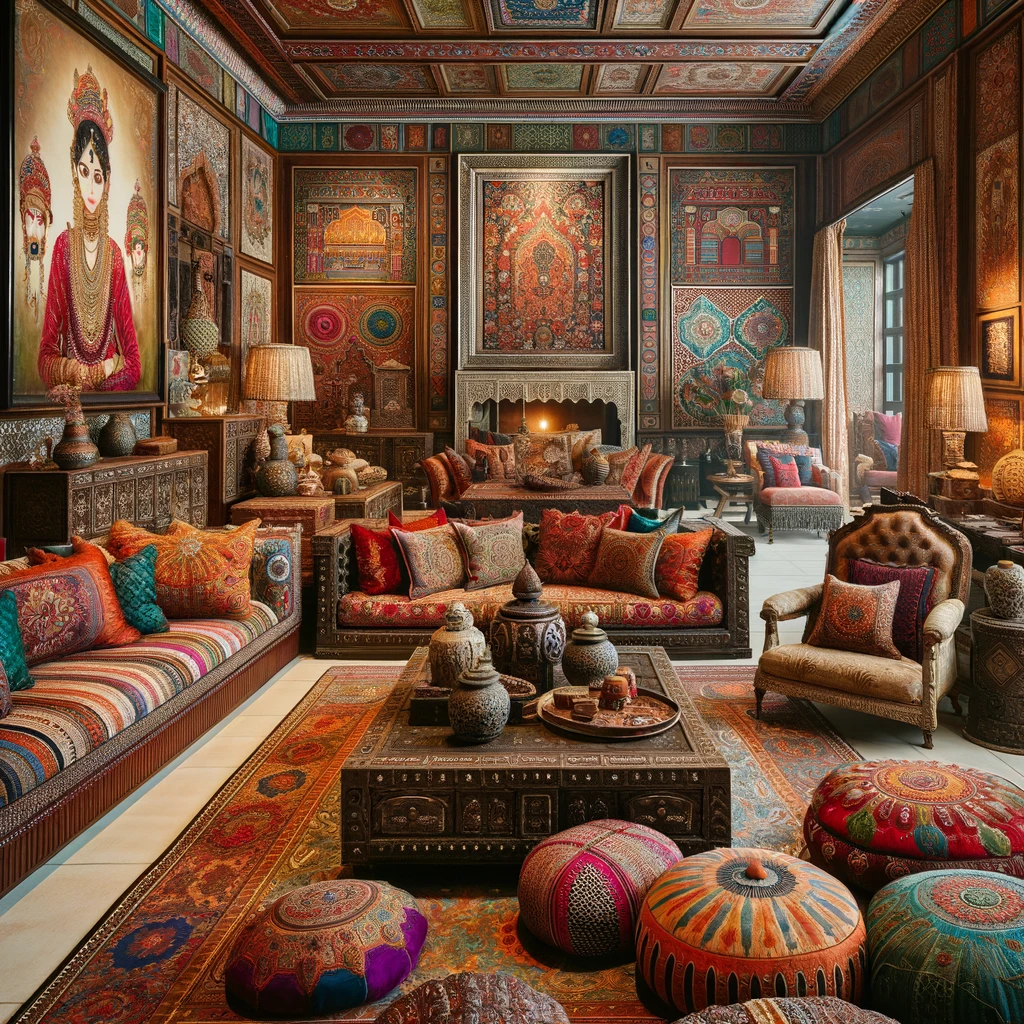
Go Bold with Maximalism (India): Indian design is all about vibrant colors, rich textiles and a fearless layering of patterns. Don’t be afraid to mix colors and textures – think jewel tones, paisley prints and handwoven rugs.

Craft a Scandi Sanctuary (Scandinavia): Scandinavian design is renowned for its focus on functionality, clean lines and a connection to nature. Introduce light wood tones, natural fibers and pops of calming blue or green.
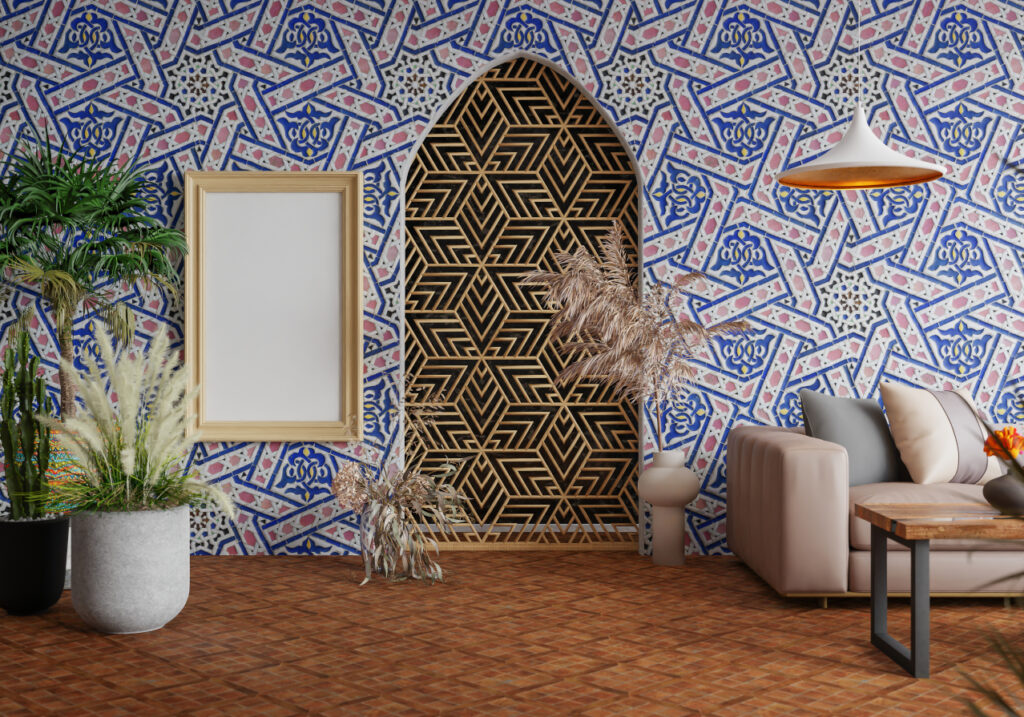
Weave in Moroccan Magic (Morocco): Moroccan style is all about intricate tilework, handcrafted furniture and pops of metallic accents. Play with geometric patterns on floors or walls, introduce brass lighting fixtures and incorporate plush floor poufs.
Remember, the key is to curate, not replicate. Don’t overwhelm a space by trying to incorporate everything from everywhere. Instead, identify a specific design element or two that resonates with your project and your client’s vision.
Some Bonus Tips for Success:
- Understand Cultural Significance: Start with research. Every element in a design from Moroccan tiles to Japanese shoji screens has cultural significance. This deep understanding prevents cultural appropriation and ensures respect and authenticity in your design choices.
- Source Local: Source materials and crafts from the origin countries. This not only supports local artisans but also gives your designs a touch of authenticity that mass-produced items cannot replicate. For instance, using genuine Mexican Talavera tiles in a kitchen backsplash or authentic Dutch Delft tiles in a bathroom creates a narrative that is both genuine and engaging.
- Let Travel Be Your Guide: Travel is a significant influence on interior design trends. Draw inspiration from the places either you or your client have visited. Use color palettes, textures and artwork that reflect the essence of those destinations. For example, a bedroom inspired by a Parisian boutique hotel or a study that mimics a cozy British library can transport occupants without leaving their homes. Explore international design magazines, browse online marketplaces featuring global artisans and visit museums with collections from around the world to get internationally inspired.
By incorporating these diverse influences, you can transform your interiors from generic to globally inspired masterpieces.
Designing Green: Innovation & Sustainability at ICFF 2024 this May
Refine your design vision and champion sustainability at the premier North American event for contemporary furniture design – the International Contemporary Furniture Fair (ICFF) 2024. Held May 19th-21st at the Javits Center in New York City, ICFF offers an unparalleled opportunity to engage with over 450 established and emerging brands leading the charge in original, eco-conscious design.
Curate your future. Explore a vast array of furnishing products for residential, contract and hospitality environments, all emphasizing sustainability and responsible sourcing. Discover innovative materials and techniques pushing the boundaries of design while minimizing environmental impact.
Fuel your expertise. ICFF Talks provides a platform for thought leadership. Gain insights from industry icons through focused panel sessions, keynote presentation, and intimate conversations. Learn about the latest trends and gain a deeper understanding of how sustainability is shaping the future of design.
Expand your network. ICFF fosters connections. Network with a global audience of architects, interior designers, retailers, and developers. Organic interactions on the show floor and dedicated evening events create boundless opportunities to build valuable relationships and explore potential collaborations.
ICFF 2024 equips you with the knowledge, resources and connections to elevate your design practice and contribute to a more sustainable future. Register at the website now and position yourself at the forefront of contemporary design.



